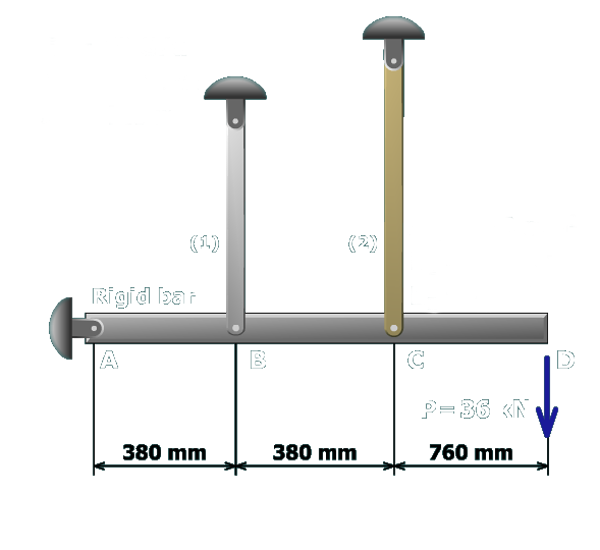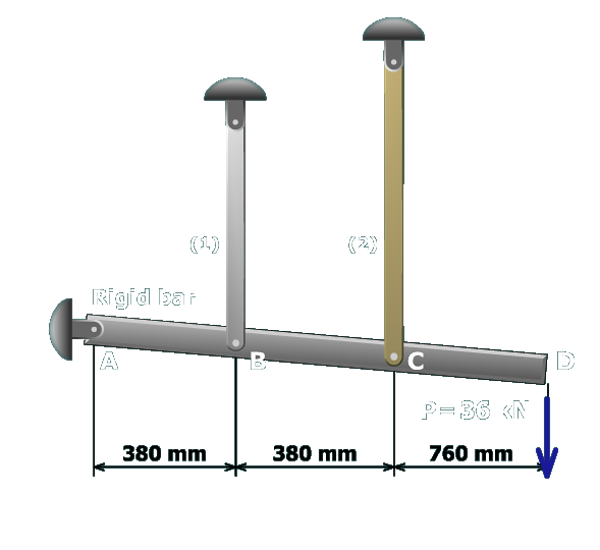

Bar is assumed to be rigid, meaning that it does not bend when load is applied. Since it is pinned, bar cannot translate at when load is applied. However, bar rotates about , and as it rotates, the connections at and move downward. This movement causes elongation in aluminum bar and brass bar . Bars and resist this deformation, developing internal forces and internal normal stresses.